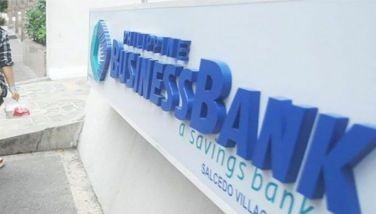Phl to remain one of fastest-growing SEA economies
MANILA, Philippines - The Philippines will likely remain one of the fastest growing economies in East Asia and the Pacific in the next two years, according to the World Bank, but the bank projects the growth rate to be slightly slower than the 7.2 percent posted in 2013.
The World Bank is forecasting the Philippines economic growth at 6.6 percent this year, and a slightly faster pace of 6.9 percent in 2015, with a possible correction to 6.5 percent in 2016.
The Asian Development Bank (ADB), on the other hand projects the country’s growth at 6.4 percent this year and a stronger 6.7 percent in 2015.
The Philippine government is looking at an economic growth rate of between 6.5- to 7.5 percent this year, and an optimistic 7.5- to 8.5-percent rate in 2015.
World Bank chief economist for East Asia and Pacific region Bert Hofman said that structural and financial reforms remain the order of the day for the country’s economic managers.
However, Hofman does not recommend new taxes, especially with the impending increase in global interest rates.
“We could see the rise of interest rates in the course of the (US) Fed tapering, and increased volatility. Likewise, most of the monetary policies are now unwinding,†he said in a teleconference press briefing yesterday.
As the emerging economies are growing and unwinding from stimulus programs, global interest rates would go up to roughly five percent in the long run, Hofman said.
He further said that structural reforms should be immediately implemented in anticipation of the expected increase in interest rates.
The World Bank economist emphasized that tax and customs reforms are very important, but tweaking of existing tax reforms instead of introducing new taxes is still the best option.
The Philippine economy advanced 7.2 percent from 6.8 percent last year, notwithstanding a devastating earthquake and a deadly typhoon that displaced 4.1 million people and inflicted a combined $424 million (P9.6 billion or 3.7 percent of GDP) in damages to agriculture, housing, and infrastructure.
The Philippines managed to reverse the anemic investment growth in 2011 and 2012 with an 18 percent investment growth in 2013. However, investment levels continue to be low relative to output in the Philippines, averaging just 19 percent of GDP during 2009-13, compared to 32 percent in Vietnam.
Consumption growth remained robust in the Philippines, supported by remittances which grew 6.4 percent from a year ago, equivalent to 8.4 percent of GDP.
World Bank senior country economist in the Philippines Karl T. Chua followed up Hofman’s recommendations focusing on domestic risks such as employment and the need to improve social spending as the country slowly enters the election period.
Chua admitted that there was a “distant but rising concern†over asset price bubble in the property sector.
“Another concern is the asset price bubble, wherein the Philippines is still on a moderate level,†he said, adding that crucial to controlling the asset price bubble are the macro-prudential measures being introduced by the Bangko Sentral ng Pilipinas (BSP) in terms of property or mortgage loans.
“Fortunately, Philippines is still a moderate case,†Chua said in the press briefing yesterday.
- Latest
- Trending























